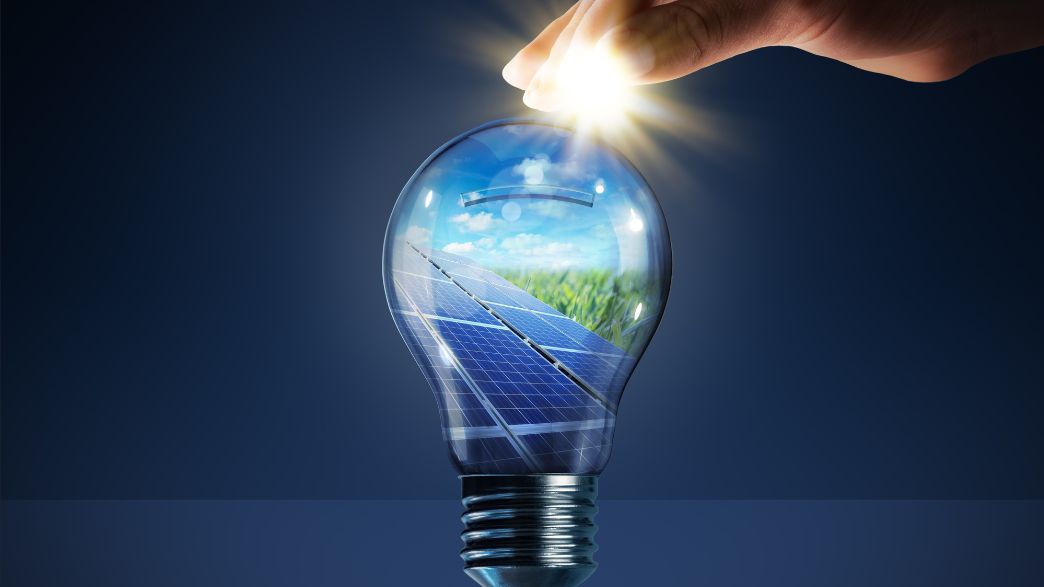The energy sector is constantly evolving and currently, two phenomena stand out in this process – electrification and the expansion of green hydrogen (H2V). According to recent estimates, these trends could inject up to R$2.2 trillion into the Brazilian economy by 2050. A pioneering study by Portal Solar highlights that the extra demand for electricity arising from these two phenomena will strengthen the solar energy market in Brazil.
This innovative report points to the leading role of solar energy in the increase in energy demand forecast for the next three decades, as a result of the decarbonization of economies. The estimated need is to add around 540 GW in centralized and distributed photovoltaic systems, as well as to implement batteries for energy storage. Although other renewable sources are also expanding to meet the new demand, solar stands out as one of the most competitive and attractive in this scenario.
The reduction in solar panel costs has also impacted this trend. Data from the International Renewable Energy Agency show that the price of solar panels has dropped by 90% on the global market between 2010 and 2019. In addition, this equipment has increased its power generation capacity by 80% per square meter in the last decade. In Brazil, the average residential energy tariff almost tripled, from R$284.67/MWh to R$632.62/MWh between 2013 and 2022, according to the National Electric Energy Agency (ANEEL).
The study indicates that a total energy transition of the current fleet of vehicles in Brazil would generate an additional demand of 403 TWh/year. This demand approaches the total electricity generation capacity of the National Interconnected System, which would require the equivalent of five new Itaipu hydroelectric plants. In parallel, charging technologies for electric vehicles are developing rapidly. According to the International Energy Agency, in 2022, more than 900,000 public charging points were installed globally, a 55% increase compared to 2021.
In the Brazilian context, data from the Ministry of Transport, the National Traffic Secretariat and the National Registry of Motor Vehicles indicate that there are approximately 120 million motor vehicles in the country. According to a report by the National Union of the Components Industry for Motor Vehicles and the Brazilian Association of the Auto Parts Industry, half of this total, around 60 million, are effectively in daily circulation.
While the importance of electrification is remarkable, with ever-increasing applications across many industries, the concept of green hydrogen is less well known. Green hydrogen is produced through electrolysis powered by renewable energy, and is seen as a pillar in the energy transition to a low-carbon economy.
The growing demand for energy, driven by electrification, together with the expansion of green hydrogen, are transforming the Brazilian energy landscape. The change is undoubtedly monumental. It is a transformation that not only changes the way we generate and consume energy, but also has the potential to reshape the economy.
Still, the transition to an energy system based on electrification and green hydrogen will not be without its challenges. It will require effective public policies, technological advances, significant investments and, above all, an adaptable mindset to adjust to this new reality.
Government initiatives and international cooperation will be key to driving this transformation. At the same time, private sector engagement will be essential to develop new technologies, drive innovation and provide the necessary capital for these investments.
In practice, electrification and green hydrogen can not only help Brazil meet its climate commitments, but also create jobs, stimulate the economy and drive sustainable development. They represent a vision of the future in which sustainability and economy go hand in hand, building an energy path that meets the demands of the present without compromising the needs of future generations.
Brazil’s energy future, therefore, looks promising. Electrification and green hydrogen are key pieces to design a more sustainable and economically viable scenario. With the right investments and policies, Brazil can establish itself as a global leader in this new era of energy. The journey will certainly not be easy, but the potential benefits for the country and the planet make this challenge an unmissable opportunity.

Comment